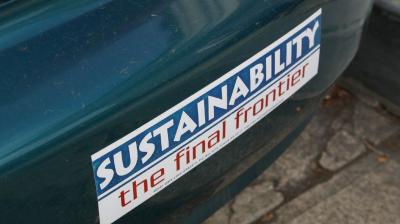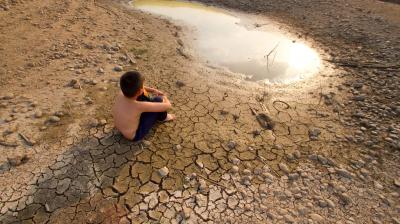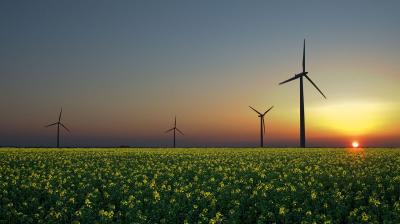Circular economy puts us on a firmer footing in a turbulent world
The Circular Economy offers an enticing prospect. By closing raw material cycles we can create a strong economy that the Earth can support. But we will not achieve such an economy on our own. If we want our vision of a circular economy to thrive, we need more direction from the Netherlands and Brussels. That would also serve our geopolitical interests. A new government, and particularly the incoming ministers for the economy, climate and the environment, may therefore very well consider this an excellent issue to promote a more strategic economic and geopolitical agenda for the Netherlands.
A circular economy means much more than shunting materials around between the factory and the users. The ultimate aim of a circular economy is that we humans will put less strain on the planet on which we live. At the same time more jobs will be created in the Netherlands and Europe because it will be cheaper to repair products than to replace them. Circular entrepreneurship therefore means thinking seriously about the choice of materials used in products, the time a product lasts, a production process based on sustainable energy and a sustainable production chain.
Many entrepreneurs are enthusiastic about the circular economy but find it difficult to achieve in reality. They come up against laws and regulations, customer attitudes and the need to obtain finance. The circular economy is a prime example of a field with huge potential for innovation. At present, though, putting these innovations into practice is too often an unrewarding process, because raw materials are still very cheap and labour is relatively expensive. Despite all the enthusiasm, achieving a circular business model is a difficult task.
September 2016 saw the launch of the government-wide ‘Nederland circulair in 2050’ programme, focused on developing and implementing a circular economy by 2050. It provides good impetus for achieving a circular economy in the Netherlands. In a related move, the subject has been placed prominently on the Dutch National Research Agenda through the Circular Economy and Resource Efficiency route, which seeks to meet the demand for wide-ranging multidisciplinary knowledge both now and in the future. The completion of knowledge chains is immensely important in this regard, with the involvement of the wider public. For example, there is strong interest in 3D printing, but how do we ensure that this development contributes to the circular economy and is supported by consumers?
If the Netherlands aspires to be circular by 2050, a different way of thinking and organising will be required. That amounts to a complex system change. Among other things it means pursuing a sustainable economic system with circular enterprises that have healthy business models both individually and as a chain. Measures such as moving from taxes on labour to taxes on raw materials and higher VAT rates for non-circular products could serve as catalysts. This requires clear political vision and choices, preferably at European level so as not to disrupt the single market, and could be confined if necessary to a leading group of like-minded countries. In this respect the plans for the circular economy that are currently on the table in Brussels do not go nearly far enough.
A circular economy is not just economically attractive. It is also in our geopolitical interest to make the switch. At a time of mounting tensions between the major powers, it is sensible to become less dependent on raw materials imported from countries that could take strategic advantage of this situation (or could be incited to do so by others). That is precisely why Chinese companies and state enterprises have long been operating in Africa to secure supplies of raw materials. At the same time China is developing a strong repair and reuse economy, which will ultimately reduce the raw materials available to the Dutch economy.
Both the Dutch and European economies are highly dependent on material imports. Of the 54 materials which Europe has identified as critical, 90% are imported. The Netherlands obtains 68% of its raw materials from abroad. At the same time some raw materials are in particularly high demand, including for the accelerating energy transition. Both wind and solar energy technologies require scarcer metals, including silver, rare earths and indium.
In Europe our import dependence is only slowly sinking in. The consumer society has triumphed, but only minor advances are being made. Our waste policy is increasingly focused on recycling raw materials and scarce metals, but a more holistic view on sustainable production and consumption is lacking. Business, science and politics are increasingly embracing the idea of moving towards a circular economy, but steps in that direction remain small and cautious.
It is particularly important to have a clearer resource agenda that aims to close cycles while taking account of geopolitical risks. This will better secure the availability of resources such as rare earths, while reducing the dependence on other raw materials. As an open trading country and de facto resource hub for much of Europe, Dutch politics can play a major role in spurring the debate in Brussels on the circular economy. That is a splendid challenge for a new government.
A Dutch version of this op-ed was co-authored with Bas Rüter and published in Trouw on 26 May, 2017.






